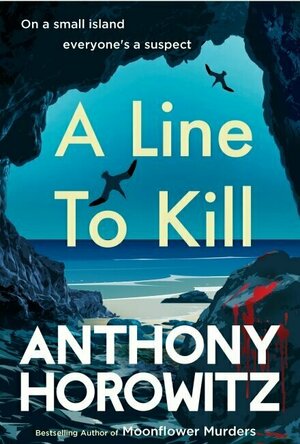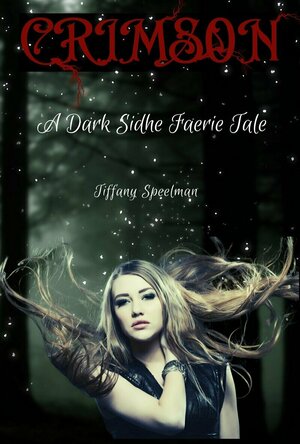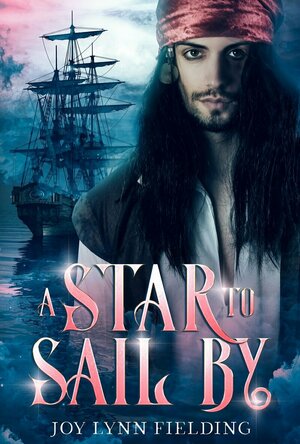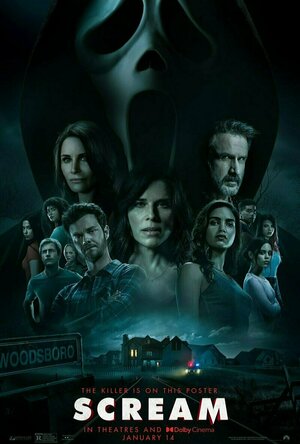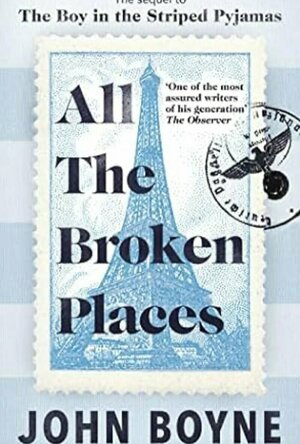Search
Search results
Hazel (2934 KP) rated A Link To Kill (Hawthorne & Horowitz Mystery #3) in Books
Aug 29, 2021
I haven't read anything by Mr Horowitz before and was a little apprehensive about reading this, with it being the third in the series, but I needn't have worried - this is a unique and enjoyable mystery.
I have never read a book where the author puts himself as one of the main characters in a book but here he is joining up with an ex-Detective Inspector Hawthorne and, I must say, it really worked for me. Mr Horowitz doesn't take himself too seriously and he comes across as a Dr Watson-type character to Hawthorne's Sherlock Holmes - which, let's face it, isn't a bad thing at all. How much the fictional Horowitz is like the real Horowitz, I don't know but I like him!
Anyway, Horowitz and Hawthorne have been invited to take part in a literary festival on the island of Alderney. A murder ensues and Hawthorne is asked to assist the local constabulary to investigate with Horowitz in tow. The relationship between the two is a complex one ... do they really like each other or do they just tolerate each other for the purposes of writing books? I am still working that one out but I am liking it.
This is a proper old-style mystery with a cast of excellent characters many of whom have their own secrets which creates multiple suspects and I for one must have said "I knew it was them all along" numerous times and was wrong! There is a lot of humour and tongue-in-cheek moments which make this a fun and enjoyable read with a very satisfying ending.
I thoroughly enjoyed this book and it was quite nice to read a murder/mystery without a plethora of violence for once and I am very much looking forward to more "adventures" from Hawthorne and Horowitz.
A thank you must go to Penguin Random House UK / Cornerstone via NetGalley for my copy in return for an unbiased and unedited review.
I have never read a book where the author puts himself as one of the main characters in a book but here he is joining up with an ex-Detective Inspector Hawthorne and, I must say, it really worked for me. Mr Horowitz doesn't take himself too seriously and he comes across as a Dr Watson-type character to Hawthorne's Sherlock Holmes - which, let's face it, isn't a bad thing at all. How much the fictional Horowitz is like the real Horowitz, I don't know but I like him!
Anyway, Horowitz and Hawthorne have been invited to take part in a literary festival on the island of Alderney. A murder ensues and Hawthorne is asked to assist the local constabulary to investigate with Horowitz in tow. The relationship between the two is a complex one ... do they really like each other or do they just tolerate each other for the purposes of writing books? I am still working that one out but I am liking it.
This is a proper old-style mystery with a cast of excellent characters many of whom have their own secrets which creates multiple suspects and I for one must have said "I knew it was them all along" numerous times and was wrong! There is a lot of humour and tongue-in-cheek moments which make this a fun and enjoyable read with a very satisfying ending.
I thoroughly enjoyed this book and it was quite nice to read a murder/mystery without a plethora of violence for once and I am very much looking forward to more "adventures" from Hawthorne and Horowitz.
A thank you must go to Penguin Random House UK / Cornerstone via NetGalley for my copy in return for an unbiased and unedited review.

Firefly Adventures: Brigands and Browncoats
Tabletop Game
Firefly: Adventures is a cooperative, mission based, skirmish-level game where the players use the...
Debbiereadsbook (1570 KP) rated Crimson: A Dark Sidhe Faerie Tale in Books
Mar 10, 2023
First time author nailed it!
Independent reviewer for Archaeolibrarian, I was gifted my copy of this book.
Ok so! As far as I can see this book is the only book currently written by this author. And if this is her FIRST book?? Oh my days, I cannot wait to see what she delivers next!
Because, bar two things, I bloody LOVED this book.
It's dark and deadly, with so much going on sometimes, I had to double back to check I fully understood. And that, for ME, is a good thing! I didn't find it especially explicit, for Kara and Alak, but for the Fae in general, it is. There is a lot of violence here too, but I think it is needed to get the way these folk live across. It's a truly multi-layered story and it takes time to get to where it's going.
Or rather, it takes time to get the whole point of the story across. And again, for ME, a very good thing. It kept me fully engaged from start to finish.
BUT.
It is a long LONG book, some 500 pages and it's not all easy reading. As I said, it takes time to build up to things. Some peeps don't like such long books. I did here, but it did take me a long time to finish. Mostly because of my next point.
AND.
Only Kara has a say. And if Alak had been given a voice, it would have broken this up a bit, and made it not seem quite so long. Because I really needed to hear from him at points along the way, especially when Kara is in danger.
Having said all that, I really REALLY enjoyed it, and I really REALLY hope we get a second book. Because while there is a HFN ending, Kara and Alak's story is by no means finished. And some other characters need a HEA, too!
So, for a first time author, I'd say Ms Speelman nailed it!
4 most excellent stars
Ok so! As far as I can see this book is the only book currently written by this author. And if this is her FIRST book?? Oh my days, I cannot wait to see what she delivers next!
Because, bar two things, I bloody LOVED this book.
It's dark and deadly, with so much going on sometimes, I had to double back to check I fully understood. And that, for ME, is a good thing! I didn't find it especially explicit, for Kara and Alak, but for the Fae in general, it is. There is a lot of violence here too, but I think it is needed to get the way these folk live across. It's a truly multi-layered story and it takes time to get to where it's going.
Or rather, it takes time to get the whole point of the story across. And again, for ME, a very good thing. It kept me fully engaged from start to finish.
BUT.
It is a long LONG book, some 500 pages and it's not all easy reading. As I said, it takes time to build up to things. Some peeps don't like such long books. I did here, but it did take me a long time to finish. Mostly because of my next point.
AND.
Only Kara has a say. And if Alak had been given a voice, it would have broken this up a bit, and made it not seem quite so long. Because I really needed to hear from him at points along the way, especially when Kara is in danger.
Having said all that, I really REALLY enjoyed it, and I really REALLY hope we get a second book. Because while there is a HFN ending, Kara and Alak's story is by no means finished. And some other characters need a HEA, too!
So, for a first time author, I'd say Ms Speelman nailed it!
4 most excellent stars
Debbiereadsbook (1570 KP) rated A Star to Sail By in Books
Sep 9, 2023
loved being kept on my toes!
Independent reviewer for Archaeolibrarian, I was gifted my copy of this book.
Crispin wanted to be in the Navy, and now he finds himself on a pirate ship, helping them. But these pirates aren't like anything he heard about and Billy, especially, calls to him for reasons he can't figure out. Billy knows though, and it takes a storm to bring them finally to admit to each other what they could be.
What I especially liked about this, was being kept on my toes!
We are aware that something happened to Crispin to mean he is surviving on a merchant ship, and is no longer in the Royal Navy, but not WHY. We know Billy hates Naval officers, but not WHY. And we get the answers to both almost at the same time. Very different reasons, but equally devastating to them. I'm not going to go into it, for spoilers, but difficult reading, Billy's especially. Be mindful of the trigger warnings on this book.
It's not especially explicit, but I didn't mind that here. It's more about the feeling these two men have for each other, and knowing that they can be together, in this time, and be safe.
It is, however, quite violent. These pirates are ...reasonable...in their behaviours, but things happen and then Crispin and Billy are dealt a nasty blow. The level of violence is not graphic, though it does carry some detailed descriptions of punishments and the aftermath. Also, the reason Billy hates Naval officers is described in some detail.
It's not a complicated read, and I found I read it faster than I normally would for a book of this length, some 370 pages.
First I've read of this author, I like the way she spins her tales. I'll certainly read more by this author.
A very enjoyable, 4 star read
*same worded review will appear elsewhere
Crispin wanted to be in the Navy, and now he finds himself on a pirate ship, helping them. But these pirates aren't like anything he heard about and Billy, especially, calls to him for reasons he can't figure out. Billy knows though, and it takes a storm to bring them finally to admit to each other what they could be.
What I especially liked about this, was being kept on my toes!
We are aware that something happened to Crispin to mean he is surviving on a merchant ship, and is no longer in the Royal Navy, but not WHY. We know Billy hates Naval officers, but not WHY. And we get the answers to both almost at the same time. Very different reasons, but equally devastating to them. I'm not going to go into it, for spoilers, but difficult reading, Billy's especially. Be mindful of the trigger warnings on this book.
It's not especially explicit, but I didn't mind that here. It's more about the feeling these two men have for each other, and knowing that they can be together, in this time, and be safe.
It is, however, quite violent. These pirates are ...reasonable...in their behaviours, but things happen and then Crispin and Billy are dealt a nasty blow. The level of violence is not graphic, though it does carry some detailed descriptions of punishments and the aftermath. Also, the reason Billy hates Naval officers is described in some detail.
It's not a complicated read, and I found I read it faster than I normally would for a book of this length, some 370 pages.
First I've read of this author, I like the way she spins her tales. I'll certainly read more by this author.
A very enjoyable, 4 star read
*same worded review will appear elsewhere
LeftSideCut (3776 KP) rated Scream (2022) in Movies
Jan 16, 2022
Creepy telephone calls, a will-they-won't-they romance between Gale Weathers and Deputy Dewey, a killer that falls over a lot, on-the-nose meta dialogue, and copious amounts of stabbing and blood, can only mean one thing - Scream is back and dammit, it feels good.
The key to the quality of the franchises 5th entry is balance. For a start, it tickles that nostalgia button just the right amount. It's certainly a chronological sequel to all of the 4 movies that came before, but it mainly serves as a love letter to the first. Saying too much could be considered as spoilers, so all I'll say is, the obvious call backs to the original don't feel forced, and make sense in a narrative manner. It doesn't feel like a cash grab. It feels like a film made by fans, for the fans.
Another noticeable balance is found in the characters. With a new Ghostface comes a new set of doomed teenagers. They're just about tolerable enough, but are well written, and aren't over reliant on the legacy characters to get by. Seeing Sidney Prescott, Gale, and Dewey all back together again is, of course, a delight, like a warm embrace from an old friend, but they're utilised in a precise manner. They don't stifle the new cast but their presence is unmistakably notable throughout.
The horror is well realised. Scream is a whole bag of fun, but is also suitably tense. The violence on display is quite brutal and unflinching. Ghostface once again feels menacing and threatening, and the mystery of their identity ticks along until the final moments. Like all of these movies, the reveal is a "I knew it!" moment before realising that you could have said that about anyone. Everybody is a suspect after all.
Radio Silence have done a cracking job of bringing a beloved horror series back to the big screen. I've seen plenty of people saying that Wes Craven would be proud, and I completely agree. Long live Scream.
The key to the quality of the franchises 5th entry is balance. For a start, it tickles that nostalgia button just the right amount. It's certainly a chronological sequel to all of the 4 movies that came before, but it mainly serves as a love letter to the first. Saying too much could be considered as spoilers, so all I'll say is, the obvious call backs to the original don't feel forced, and make sense in a narrative manner. It doesn't feel like a cash grab. It feels like a film made by fans, for the fans.
Another noticeable balance is found in the characters. With a new Ghostface comes a new set of doomed teenagers. They're just about tolerable enough, but are well written, and aren't over reliant on the legacy characters to get by. Seeing Sidney Prescott, Gale, and Dewey all back together again is, of course, a delight, like a warm embrace from an old friend, but they're utilised in a precise manner. They don't stifle the new cast but their presence is unmistakably notable throughout.
The horror is well realised. Scream is a whole bag of fun, but is also suitably tense. The violence on display is quite brutal and unflinching. Ghostface once again feels menacing and threatening, and the mystery of their identity ticks along until the final moments. Like all of these movies, the reveal is a "I knew it!" moment before realising that you could have said that about anyone. Everybody is a suspect after all.
Radio Silence have done a cracking job of bringing a beloved horror series back to the big screen. I've seen plenty of people saying that Wes Craven would be proud, and I completely agree. Long live Scream.
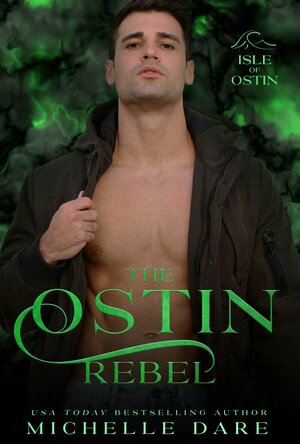
The Ostin Rebel (Isle of Ostin #4)
Book
Everest Ostin thought being a royal vampire was amazing when he was younger. As he aged, he...
MM Paranormal Romance
ClareR (6001 KP) rated All the Broken Places in Books
Nov 4, 2023
Gretel Fernsby has a terrible secret that she’d rather others didn’t know. If you’ve read The Boy in the Striped Pyjamas, you’ll recognise the name: Gretel is the daughter of the camp Commandant of Auschwitz.
In short chapters, flashing between the past and the present, we learn about 91 year old Gretel’s past, and what happened when she and her mother escaped Germany.
Gretel is very well off, living in an expensive block of very large flats in central London. She doesn’t really have any friends, and seems to keep her true self from everyone including her son.
She is confronted with the memory of her younger brother, Bruno, when a boy of his age moves in to the downstairs flat. She realises that his father is violent, and his mother is abused. Gretel can’t let this kind of violence happen again.
The characters in this were superb. Whilst the first book had its problems with historical accuracy, I feel that this book centred more around trauma, guilt and shame. Gretel carries all of these things around with her forever. She feels culpable for what happened in the camp - even though she was both a child and female. In retrospect, she is able to see what was wrong with the nazi regime, but at the time would have been brainwashed. She wouldn’t have known a time where Jews and other “undesirable” minorities would have been treated any differently. The wonder is that she went on to learn that this was wrong. The trauma that she carries with her from the death of her brother, learning about what her father was guilty of, and occurrences in Paris, is lifelong.
From Gretel’s life experiences to those of her downstairs neighbour, everything is handled with compassion and tact. Again, it’s not perfect, but then neither are humans. And that is what this book shows above all: that we can learn from our mistakes if we are willing to do so.
In short chapters, flashing between the past and the present, we learn about 91 year old Gretel’s past, and what happened when she and her mother escaped Germany.
Gretel is very well off, living in an expensive block of very large flats in central London. She doesn’t really have any friends, and seems to keep her true self from everyone including her son.
She is confronted with the memory of her younger brother, Bruno, when a boy of his age moves in to the downstairs flat. She realises that his father is violent, and his mother is abused. Gretel can’t let this kind of violence happen again.
The characters in this were superb. Whilst the first book had its problems with historical accuracy, I feel that this book centred more around trauma, guilt and shame. Gretel carries all of these things around with her forever. She feels culpable for what happened in the camp - even though she was both a child and female. In retrospect, she is able to see what was wrong with the nazi regime, but at the time would have been brainwashed. She wouldn’t have known a time where Jews and other “undesirable” minorities would have been treated any differently. The wonder is that she went on to learn that this was wrong. The trauma that she carries with her from the death of her brother, learning about what her father was guilty of, and occurrences in Paris, is lifelong.
From Gretel’s life experiences to those of her downstairs neighbour, everything is handled with compassion and tact. Again, it’s not perfect, but then neither are humans. And that is what this book shows above all: that we can learn from our mistakes if we are willing to do so.
Lyndsey Gollogly (2893 KP) rated The Echo Killing ( Harper McClain 1) in Books
Dec 28, 2023
206 of 235
Kindle
The Echo Killing ( Harper McClain 1)
By Christi Daugherty
⭐️⭐️⭐️⭐️
When a murder echoing a fifteen-year-old cold case rocks the Southern town of Savannah, crime reporter Harper McClain risks everything to find the identity of this calculated killer in Christi Daugherty's new novel The Echo Killing.
A city of antebellum architecture, picturesque parks, and cobblestone streets, Savannah moves at a graceful pace. But for Harper McClain, the timeless beauty and culture that distinguishes her home’s Southern heritage vanishes during the dark and dangerous nights. She wouldn’t have it any other way. Not even finding her mother brutally murdered in their home when she was twelve has made her love Savannah any less.
Her mother’s killer was never found, and that unsolved murder left Harper with an obsession that drove her to become one of the best crime reporters in the state of Georgia. She spends her nights with the police, searching for criminals. Her latest investigation takes her to the scene of a homicide where the details are hauntingly familiar: a young girl being led from the scene by a detective, a female victim naked and stabbed multiple times in the kitchen, and no traces of any evidence pointing towards a suspect.
Harper has seen all of this before in her own life. The similarities between the murder of Marie Whitney and her own mother’s death lead her to believe they’re both victims of the same killer. At last, she has the chance to find the murderer who’s eluded justice for fifteen years and make sure another little girl isn’t forever haunted by a senseless act of violence—even if it puts Harper in the killer’s cross-hairs…
This was really good I enjoyed it. I did catch on to the killer early on but it was still a really good read. Characters were interesting and the storyline was good. Looking forward to more.
Kindle
The Echo Killing ( Harper McClain 1)
By Christi Daugherty
⭐️⭐️⭐️⭐️
When a murder echoing a fifteen-year-old cold case rocks the Southern town of Savannah, crime reporter Harper McClain risks everything to find the identity of this calculated killer in Christi Daugherty's new novel The Echo Killing.
A city of antebellum architecture, picturesque parks, and cobblestone streets, Savannah moves at a graceful pace. But for Harper McClain, the timeless beauty and culture that distinguishes her home’s Southern heritage vanishes during the dark and dangerous nights. She wouldn’t have it any other way. Not even finding her mother brutally murdered in their home when she was twelve has made her love Savannah any less.
Her mother’s killer was never found, and that unsolved murder left Harper with an obsession that drove her to become one of the best crime reporters in the state of Georgia. She spends her nights with the police, searching for criminals. Her latest investigation takes her to the scene of a homicide where the details are hauntingly familiar: a young girl being led from the scene by a detective, a female victim naked and stabbed multiple times in the kitchen, and no traces of any evidence pointing towards a suspect.
Harper has seen all of this before in her own life. The similarities between the murder of Marie Whitney and her own mother’s death lead her to believe they’re both victims of the same killer. At last, she has the chance to find the murderer who’s eluded justice for fifteen years and make sure another little girl isn’t forever haunted by a senseless act of violence—even if it puts Harper in the killer’s cross-hairs…
This was really good I enjoyed it. I did catch on to the killer early on but it was still a really good read. Characters were interesting and the storyline was good. Looking forward to more.
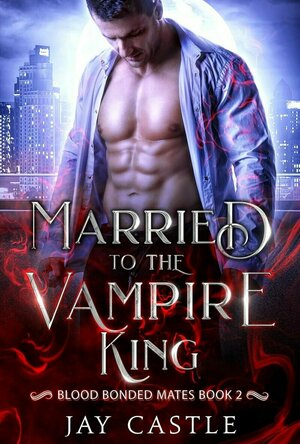
Married to the Vampire King (Blood Bonded Mates #2)
Book
ETHAN The bad news is that the vampires and witches of this city are all going to kill each other....
MM Paranormal Romance Series Vampires

The Paris Portrait (A Fabiola Bennett Mystery #3)
Book
Fabiola stumbles upon a clue that indicates a royal portrait went missing almost two hundred years...
Historical Mystery Art History Dual Timeline
